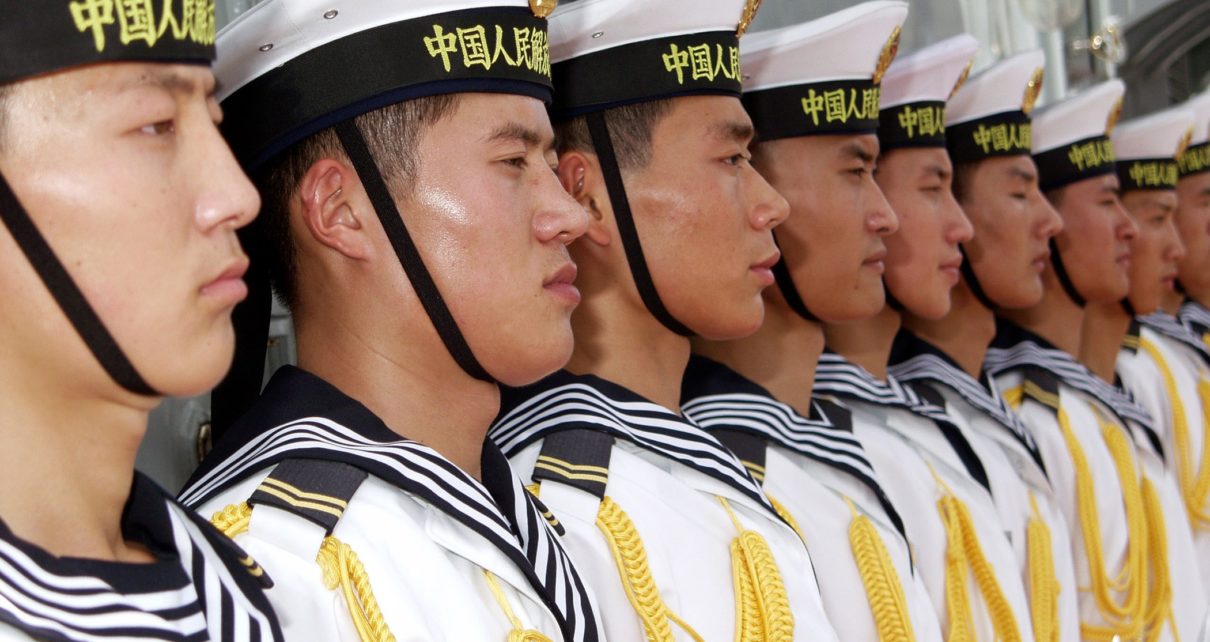This is the second installment of the two part series on Maritime Autonomous Systems. See Part One, Special Report: The MAS Gap, Canada Falls Behind as Allies Adopt Maritime Autonomous Systems.
The rapid development and deployment of Maritime Autonomous Systems (MAS) are transforming global maritime security. Canada is lagging behind its allies, partners, adversaries, and competitors, including the Russian Federation and the People’s Republic of China (PRC). Under Xi Jinping’s leadership, China has rapidly expanded the People’s Liberation Army (PLA) and is integrating MAS into the People’s Liberation Army Navy (PLAN) naval strategy. This includes the amalgamation of artificial intelligence (AI), unmanned systems, and research initiatives within the Military-Civil Fusion (MCF) strategy. Similarly, Russia has embraced MAS as part of its asymmetric military strategy to narrow its capability gap with the West. These advancements are supported by state policies and industrial integration, enabling both nations to reshape their maritime power dynamics and challenge the established rules-based order within the naval domain. In contrast, Canada is lagging in adopting MAS, risking vulnerabilities in an era where these technologies will be critical for sovereignty, security, and international commitments.
Background
The geopolitical landscape is undergoing significant transformation, with escalating tensions between Russia, China, and the West reshaping global security dynamics. Russia’s war in Ukraine has heightened NATO’s focus on collective defence and exposed the need for advanced capabilities to counter asymmetric threats. Meanwhile, China’s assertive actions in the Indo-Pacific, including in Taiwan and the South China Sea, and its ‘exploration’ of the Arctic, coupled with its rapid naval modernization, signal its intent to challenge the rules-based international order.
The Russian and PLAN are investing heavily in MAS, integrating AI and unmanned vehicles to enhance their military strategies. These developments directly impact Canada, given Canada’s vast coastline, membership in NATO, strategic Arctic sovereignty concerns, in addition to its more recent Indo-Pacific and Arctic strategies and its commitment to global maritime stability as a blue-water navy. With policies such as the Royal Canadian Navy’s (RCN) Leadmark Strategy 2040, the National Shipbuilding Strategy, the Arctic Foreign Policy, and the Defence Policy Update, Our North Strong and Free (ONSAF), Canada has positioned itself as a maritime leader. However, rapid technological evolution in the naval domain demands a corresponding modernization of its capabilities, actions and funding.
Canada must urgently adopt MAS to address these challenges and safeguard its economic and security interests in increasingly contested maritime spaces. The PRC’s militarization of the Indo-Pacific, with advanced platforms such as the unmanned surface vehicles (USV), the Zhu Hai Yun and Jari-USV-A, and Russia’s deployment of the nuclear-powered Poseidon unmanned underwater vehicles (UUV), demonstrates the disruptive potential of MAS at the operational level. These technologies challenge maritime stability, threaten freedom of navigation, and directly undermine Canadian sovereignty in the Arctic, NATO allies, and its Indo-Pacific Strategy. By integrating MAS, Canada can enhance its capabilities in ISR, anti-submarine warfare, and Arctic-specific operations, ensuring persistent monitoring and response without exposing personnel to risk in harsh conditions. Furthermore, MAS adoption aligns with Canada’s NATO commitments, strengthening interoperability with allies and addressing vulnerabilities exploited by adversaries.
The People’s Republic of China
The PLA and PLAN are rapidly expanding. The current PLAN fleet includes over 370 ships and submarines, of which 140 are major surface combatants and three aircraft carriers. By 2030, the PLAN is projected to expand to 435 ships with a significant focus on acquiring new major naval platforms. PLAN’s rapid modernization and MAS adoption have been significantly aided by the PRC and Chinese Communist Party (CCP) leadership’s overall strategic direction. In 2017, when Xi Jinping visited the training of unmanned operations, Xi stated that unmanned vehicles were and would be critical components to combat operations on the modern battlefield. In the near term, in 2022, President Xi called for China to ‘speed up the development of unmanned, intelligent combat capabilities and promote coordinated development and application of the network information system’. Furthermore, in 2023, Xi reiterated his support by calling for the PLA to integrate AI into combat forces. The CCP leadership want the PLA to move from military-technological development, mechanization, and informatization to intelligentization by 2027. This was indicated at the 20th CCP National Congress. Intelligentization involves the integration of AI, quantum computing, big data and other emerging technologies in the PLA. To compete directly against the U.S., its partners and allies, the PLA is developing a ‘multidomain precision warfare’ concept. This concept involves integrating different branches of the PLA and targeting vulnerabilities in the adversarial operational systems across a variety of military domains through precision. Ultimately, the concept looks to target the weak links in the U.S. networking linking systems and domains and neutralize or overwhelm U.S. advantages.
The PRC’s Ministry of National Defense have strategically focused its R&D and synergized with its civil industries to aid its military expansion. This includes the establishment of research institutions such as the Artificial Intelligence and Unmanned Systems Research Centres. Likewise, the key Chinese military think tank, the Academy of Military Science (AMS), has also updated its doctrine to cope with the AI technological development. The revamped AMS is tasked with driving defence innovation and ensuring that the PLA’s warfighting theory and doctrine fully capitalize on disruptive technologies, such as AI and autonomous systems.The US DOD 2023 China Military Power Report states that the PLA is ‘purchasing greater autonomy for unmanned aerial, surface, and underwater vehicles to enable manned and unmanned teaming, swarm attacks, optimized logistic support, and distributed ISR, among other capabilities.’ These concepts are then implemented using a whole-of-government and economy approach to feed the rapid development, construction and deployment of PLAN modernization and expansion. This is most widely articulated by strategies such as a geoeconomic defence and security cluster, known as the Military-Civil Fusion (MCF) Strategy and the Integrated National Strategy Systems and Capabilities Policy. MCF combines and harnesses technological advancements and industrial capabilities to bolster instruments of national power, including elevating the PLAN into a ‘world-class’ military force capable of global power projection. The US DOD, as well as independent experts, believe that the strategy seeks to utilize civilian-military technology advancements and industrial capabilities to bolster the PLAN’s capacity to project power by utilizing its mass-subsidized and economically distortive industrial sectors in rapidly evolving technologies, such as AI and quantum computing. The MCF critically fuses economies of scale and scope, providing the PLAN with a relatively affordable military-industrial base, which facilitates the rapid expansion of its forces. The PRC’s vast strategic direction on automated systems is enabling the development, construction and implementation of MAS UUVs and USVs into the PLAN. This report will focus on China’s USVs, Marine Lizard, Tiaxing-1, Zhu Hai Yun, and the Jari-USV-A.
PRC MAS USV
The PLAN is actively integrating unmanned into its maritime operations, guided by evolving doctrines and policies that emphasize technological advancement and strategy deployment. This strategic direction includes the development and deployment of capabilities that can or will be able to conduct ISR, gray zone operations, anti-access/area denial, force multiplication and swarm tactics, and integrate and maximize interoperability with crewed platforms and operations, and other branches of the PLA. UUVs and USVs under development, construction and deployment are largely guarded by intensive secrecy in the PRC; however, experts and intelligence reports have shed light on aspects of the PLAN’s MAS concepts.
The first unmanned ship project in China was started in 2014, which then commissioned the world’s largest USV test site in December 2018. In 2017, at the China Marine Economy Expo, HiSiBi Boats showcased their fast (92.6 km/h) USV Tianxing-1. HiSiBi Boats Company said that the Tianxing-1 USV can be used in maritime law enforcement and as an addition to naval manpower. Then in 2019, the Marine Lizard USV was developed by a subsidiary of a Chinese state-owned shipbuilding corporation, China Shipbuilding Industry Corp (CSIC). The Marine Lizard was the world’s first amphibious unmanned surface vessel with speed, advanced navigation, a fire control system and situational awareness systems. According to Qingdao Wuchuan Heavy Industry, the Marine Lizard was designed for operations in the South China Sea and the disputed islands, and the Nine-Dash Line. Its applications in naval combat, however are largely unproven, and the hyperbolic statements by its development team have resulted in skepticism by analysts. Nonetheless, the Tianxing-1 and Marine Lizard indicate that the PRC and its state and private industry partners have been intricately developing and constructing USVs since 2014, indicating their desire to harness the technology and deploy it in PLA in the South China Sea and amongst the disputed islands.
In January 2023, China delivered the world’s first seaborne drone carrier, the Zhu Hai Yun, announced to be for ‘research purposes’, designed to serve and deploy over 50 unmanned air, surface and undersea vehicles. The Zhu Hai Yun in late 2023 circumnavigated closely around Taiwan and slowed to a crawl at critical junctions. The vessel has dual-use capabilities, as it is equipped with advanced instrumentation, such as side-scan sonar, which can identify mines and submarines. The PLAN’s Jari-USV-A Multipurpose USV is an experimental combat USV shown through satellites. At the Airshow China, the PRC Ministry of National Defence announced in early November 2024, that the USV ‘boasts’ a 4,000-nautical-mile range and capabilities for long-range strikes, air defence, anti-missile, and anti-submarine warfare. Defence analysts suggest that the Jari-A will act as a force multiplier for the PLAN fleet, employing radar to aid in tracking and identifying aerial threats and used as a screen for surface and underwater vulnerabilities. The Jari-A can also launch recovery UAVs and is well-armed, with a Vertical Launch System, 57mm gun and missile defence. The PLAN’s goal of operating at least six aircraft carriers by the mid-2030s means these large capital ships will require support vessels. The Jari has had numerous development stages; however, recent reports and satellite photography show that the Jari-A has recently received significant developmental upgrades.
The PLAN’s rapid advancement in its technological capabilities and the integration of MAS into its operations present significant potential advantages in the South China Sea and any future conflicts, such as an invasion of Taiwan. These capabilities could facilitate highly coordinated swarm attacks, optimize logistical support, and enhance ISR capabilities. Moreover, MAS could significantly augment the PLAN’s existing naval platforms, creating an integrated force that can operate across multiple domains with unprecedented efficiency. With AI-driven warfare concepts and the focus on precision targeting and disrupting enemy networks MAS could facilitate a capability edge in the contested areas of the South China Sea, where it has long sought to assert dominance. Should China control the South China Sea and its critical sea lanes, it could severely restrict freedom of navigation in one of the world’s most important maritime corridors. This would have far-reaching consequences, especially for international commercial shipping, which depends on these lanes for the transportation of goods. The ability to block or control these vital trade nodes would undermine the global supply chain and directly threaten the economic interests of countries like Canada, whose prosperity is closely tied to unimpeded access to international markets.
The Russian Federation
Since Putin’s return to the presidency in 2012, Russia has drastically increased its military posture and sought to regenerate the Russian Federation Armed Forces. This regeneration and reconstitution have resulted in updates in doctrine, policy and directives, witnessed most recently through the 2021 National Security Strategy, the Basic Principles of Russian Federation State Policy in the Arctic to 2035 and the 2022 Maritime Doctrine of the Russian Federation. The new naval doctrine replaced the existing 2015 doctrine, which was published after the annexation of Crimea and is critically different, with a focus on socioeconomics and strong confirmation that Russia is preparing and conducting direct confrontation with the West through a ‘total hybrid war’. This includes challenging maritime law and norms stipulated by the United Nations Convention on the Law of the Sea (UNCLOS). The Russian marine doctrine prioritizes “fixing its external border in accordance with Article 76 of the United Nations Convention of Law of the Sea”, in which the Russian Duma stated “the Arctic is Russian”. According Olga Chirac, at the Center for International Maritime Security, “Russian proposals to extend the continental shelf in the Arctic Ocean is another example of fixing borders”. Moreover, the doctrine asserts Russia’s belief that “the immutability of the historically established international legal regime of inland sea water in the Arctic regions and the straits of the Northern Sea Route” and “control of the naval activities of foreign states in the waters of the Northern Sea Route” as the basis for its policy aims. This complements Russia’s Basic Principles 2035 Arctic policy, and the 2021 National Security Strategy, and directly challenges Canadian sovereignty in the Arctic.
Since the 2008 defence major reform program, Russia has focused on a non-linear pathway to narrow the capability gap with the West, which now includes the proliferation of autonomous systems. Russian military institutions, such as the Advanced Research Foundation are tasked with developing breakthrough military concepts and technologies, including unmanned vehicles. In 2021, the head of the Military Academy of the Armed Forces General Staff, Colonel-General Vladimir Zarudnitsky, said that the use and development of unmanned and autonomous systems, the ‘robotization’ of armed conflict, with the deployment of AI, will have the greatest effect on the Russian armed forces’ ability to meet future challenges. The Russian defence and industrial sector, similarly to the US and other advanced militaries see MAS as an intricate component of future naval warfare and look to integrate MAS into a ‘global network’ of underwater, aerial, and surface autonomous and unmanned vehicles alongside submarines, surface and logistical vessels. As reported by Defence News, Sergei Smylov, an independent defence expert based in Russia stated “the Russian defense industry will develop [AI] and automated systems for products with high speed, where errors are not so critical.” This focus indicates the Russian political leadership, its R&D apparatus, and defence industry are eager to enter the autonomous systems race, including in the naval domain.
Russian Federation MAS UUV
In an extensive 2021 Chatham report, Bennett et al discuss how Russia is developing a plethora of MAS. These include combat UUVs, such as the Cephalopod and Surrogat. The Cephalopod is an anti-submarine capability, intended for escort and guard missions. Whereas the Surrogat UUV is reported to ‘reproduce an acoustic and electromagnetic signature that either mimics an adversary or a Russian submarine, to draw enemy assets out or hide Russian vessels from discovery. For ISR UUVs, Russia is deploying the Vityaz and Galtel. The Vityaz-D is a ‘full-ocean depth autonomous deep-submergence vehicle’, which reportedly reached the Marianna Trench in 2020 and completed undersea tasks. Whereas the Galtel ISR UUV, was tested in Syria in 2017-2018, and mapped out a port area. For Mine Countermeasure USV, Russia has developed the Skanda, Iskatel and Buk-600. The Russian Navy has tested these since 2017, for Command, Control Communications, Computers, Intelligence, Surveillance and Reconnaissance (C4ISR) tasks. In 2022, CEO of the Krylov State Research Center, Oleg Savchenko in an interview with Russia-state controlled news outlet TASS said Russia’s naval modernization plans are proceeding and “future ships may be relieved of some traditional means… [and] robots will become inalienable attributes of ships of a different class. There will be unmanned aerial vehicles and autonomous uninhabited underwater vessels, including those capable of operating in a swarm”. According to Army Recognition and Russian-state media, Russia has begun production of the KMZ USV, an unmanned surface vessel which will be capable of fulfilling roles such as reconnaissance, cargo transport and armed strike missions.
The most prominent and famous capability that has been reported from Russia is the nuclear-powered UUV, Poseidon, which is a combat set of nuclear-tipped torpedoes which will be launched from the Belgorod nuclear submarines. The capability was shown off in April 2022 on a popular Russian state TV-controlled show, showing the use of the weapon destroying the UK and Ireland with a nuclear tsunami in retaliation for the UK’s support for Ukraine. According to experts, the weapon is intended to focus on inflicting unacceptable levels of damage to coastal areas, creating a wide area of radioactive contamination zone that would be unsuitable for military and economic activity. This capability was leaked by the US in 2018, stating that Russia was developing a “new intercontinental, nuclear-armed, nuclear-powered, undersea autonomous torpedo”. Sidharth Kaushal, a research fellow at the UK think tank, RUSI, said the Poseidon UUV has a range of at least 10,000 km and a depth of 1,000m. This range, depth, speed and autonomous abilities make the capability hard to intercept. According to Pavel Podvig, an expert on Russia’s nuclear forces at the United Nations Institute for Disarmament Research (UNIDIR), the capability was developed to evade the US missile defence system. Whereas, Kaushal has said the capability could also be used to destroy “a good part of a carrier battle group at sea”. The Poseidon is a new weapon category and will reshape naval planning and strategy. According to Naval News, Western defence planners will have to develop new capabilities to intercept it, however, this will take considerable time and investment.
Conclusion
The rapid adoption of MAS by China and Russia highlights their strategic commitment to reshaping global maritime power dynamics and challenging the rules-based international order. China’s incorporation of MAS into its naval strategy, backed by initiatives such as the Military-Civil Fusion strategy and swift technological advancements, has led to the development of sophisticated platforms like the Zhu Hai Yun and Jari-USV-A, which emphasize ISR, gray-zone operations, and swarm tactics. Similarly, Russia’s asymmetric strategy seeks to leverage MAS to fill capability gaps with the West, employing systems such as the Poseidon UUV and Surrogat UUV to redefine naval warfare and deterrence. These advancements and investments demonstrate a clear policy direction and resource prioritization by both nations to utilize MAS for strategic advantage. In contrast, Canada, despite its extensive maritime interests and strategic frameworks, has yet to effectively adopt MAS, placing it at a potential disadvantage in an era of rapid technological evolution and increasing maritime competition. To maintain relevance in this changing security environment, Canada must prioritize MAS integration, ensuring its naval capabilities align with the demands of a contested global maritime domain.
Photo: “person, row, military, Chinese, profession, team, jockey, navy, China, marching, lined up, sailors, military officer, military person” (201), via pxhere. Licensed under Creative Commons CC0.
Disclaimer: Any views or opinions expressed in articles are solely those of the author and do not necessarily represent the views of the NATO Association of Canada.




